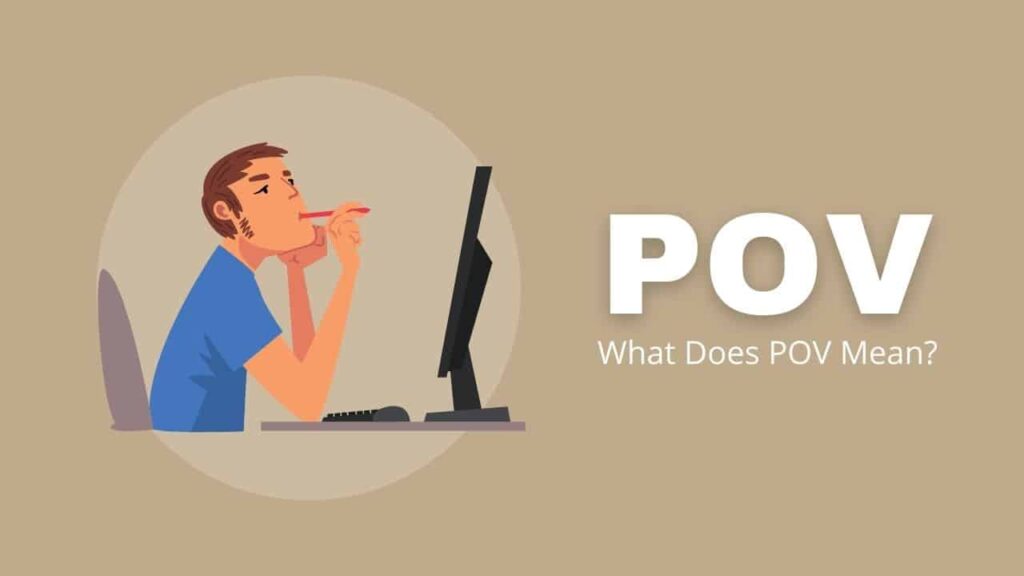Point of View: Unveiling the Narrative Lens
Imagine yourself hurtling down a snowy mountain on a snowboard, the wind whipping through your hair. Suddenly, you switch perspectives and witness the entire scene from a hovering drone high above. This is the power of point of view (POV), a narrative tool that shapes how we experience stories and engage with the world around us.
This comprehensive guide delves into the various applications of POV, exploring its role in literature, film, and even everyday communication.
Unveiling the Narrative Compass: An Introduction to POV
Point of view refers to the perspective from which a story is narrated or experienced. It acts as a narrative compass, guiding the reader or viewer through the world of the story and shaping their understanding of events, characters, and emotions.
Here are the three main types of POV commonly used in storytelling:
-
First Person POV: The story unfolds through the eyes of a single character, using pronouns like “I,” “me,” and “my.” This creates a sense of intimacy and allows readers to directly experience the character’s thoughts, feelings, and perceptions.
-
Second Person POV: The narrator directly addresses the reader using the pronoun “you.” This is a less common technique but can create a sense of immersion and interactivity. Imagine a choose-your-own-adventure story where the “you” makes decisions that influence the plot.
-
Third Person POV: The narrator stands outside the story, using pronouns like “he,” “she,” and “they.” This allows for more flexibility in revealing information and shifting perspectives between characters. There are two main subcategories of third person POV:
- Third Person Limited: The narrator focuses on the thoughts and feelings of a single character, similar to first person but without the “I” pronoun.
- Third Person Omniscient: The narrator has god-like knowledge of all characters’ thoughts, feelings, and events within the story.
The Power of Perspective: POV in Action
Let’s explore how different POVs can affect a story:
-
Mystery with a Twist: A first-person POV can keep readers guessing in a mystery novel. We experience the story through the protagonist’s eyes, sharing their limited knowledge and suspicions.
-
Epic Fantasy Adventure: Third person omniscient POV allows authors to showcase the vast scope of an epic fantasy world, following multiple characters and weaving their narratives together.
-
Shifting Perspectives: A story can even employ multiple POVs, offering readers a deeper understanding of different characters’ motivations and experiences.
Beyond Literature: Embracing POV in Film and Daily Life
POV isn’t limited to written narratives. It plays a crucial role in filmmaking as well:
-
The Director’s Choice: Filmmakers use camera angles and shot selection to establish POV. A close-up shot places viewers directly in a character’s perspective, while a wider shot provides a more objective view.
-
Immersive Experiences: The use of virtual reality (VR) technology allows for a truly immersive first-person POV experience, placing viewers directly in the heart of the action.
-
Understanding Your Audience: Even in everyday communication, considering POV is essential. When writing a persuasive essay or giving a presentation, tailoring your message to your audience’s perspective increases its effectiveness.
Frequently Asked Questions About POV
Q: What is the difference between perspective and POV?
A: Perspective is a broader term encompassing a character’s worldview, experiences, and biases. POV is the specific narrative technique that reveals that perspective to the reader or viewer.
Q: How can I identify the POV of a story?
A: Look for pronouns used throughout the narrative. First person POV uses “I,” “me,” and “my,” while third person POV uses “he,” “she,” “they,” and “it.”
Q: Is there a right or wrong POV to use in storytelling?
A: There’s no single “correct” POV. The best choice depends on the story you want to tell and the effect you want to achieve. Consider experimenting with different POVs to see which best suits your narrative.
Q: Can POV be unreliable?
A: Absolutely! Stories can be narrated from the perspective of an unreliable narrator, whose perception of events may be biased or even delusional. This can create suspense and keep readers guessing about the truth.
Understanding POV equips you to not only appreciate stories more but also craft your own narratives, be it a captivating novel, a persuasive presentation, or simply a clear and effective message. So next time you encounter a story, take a moment to consider the perspective through which it unfolds. It might just change the way you experience the world.



